Trumpism, Neoclassicism, and Architecture as Propaganda
In an article, originally published on Platform, Michael R. Allen, an American historian, researcher and visiting professor at West Virginia University, looks back at Donald Trump’s executive order of 23 December 2020, ordering that all new federal government buildings adopt a neoclassical style. This decision was part of a long-running campaign by the American right against ‘ugly’ architecture. Although the order only lasted two months before being rescinded by Joe Biden, it highlighted a wider phenomenon: the use of architecture as political propaganda.
Rediscover this article on the eve of Donald Trump’s return to the White House.
Michael R. Allen
At the end of a presidency in which incendiary statements were only slowly (if ever) meted out into fine-grained policies, Donald Trump decreed by executive order on December 23, 2020 that all new federal government buildings would be neoclassical in style, and that federal agencies should demolish modernist federal buildings or alter them beyond recognition. The executive order, Promoting Beautiful Federal Civic Architecture, even constituted a new commission to ensure that the U.S. General Services Administration (GSA) maintain the neoclassical style on behalf of ‘the people.’
Trump had threatened such an edict for years, following a longer right-wing crusade against non-classical architecture. The order inspired passionate dissent from the American Institute of Architects, DOCOMOMO US, and others. Thankfully, the policy lasted only two months before President Joe Biden rescinded it. Yet its white nationalist doctrine is far from dead. The recent call for an America First Caucus among House Republicans included an endorsement of ‘the architectural, engineering and aesthetic value that befits the progeny of European architecture . . . stunningly, classically, beautiful, befitting a world power and source of freedom.’
At the heart of such claims lie old myths about the supposed elitism of modernism and its descendants. After entertaining drafts in which brutalist and deconstructivist architecture were banned outright, Trump’s order instead rehearsed and enflamed shopworn allegations of architectural snobbery. ‘The resulting Federal [sic] architecture sometimes impresses the architectural elite, but not the American people who[m] the buildings are meant to serve,’ reads the order. In the Trumpian worldview, everything from the deconstructivist, curtain-walled San Francisco Federal Building designed by Morphosis (2007) to the portentous, concrete brutalist J. Edgar Hoover Building designed by C.F. Murphy & Associates in Washington, D.C. (1964) embodies an abhorrent strain of deviationism.
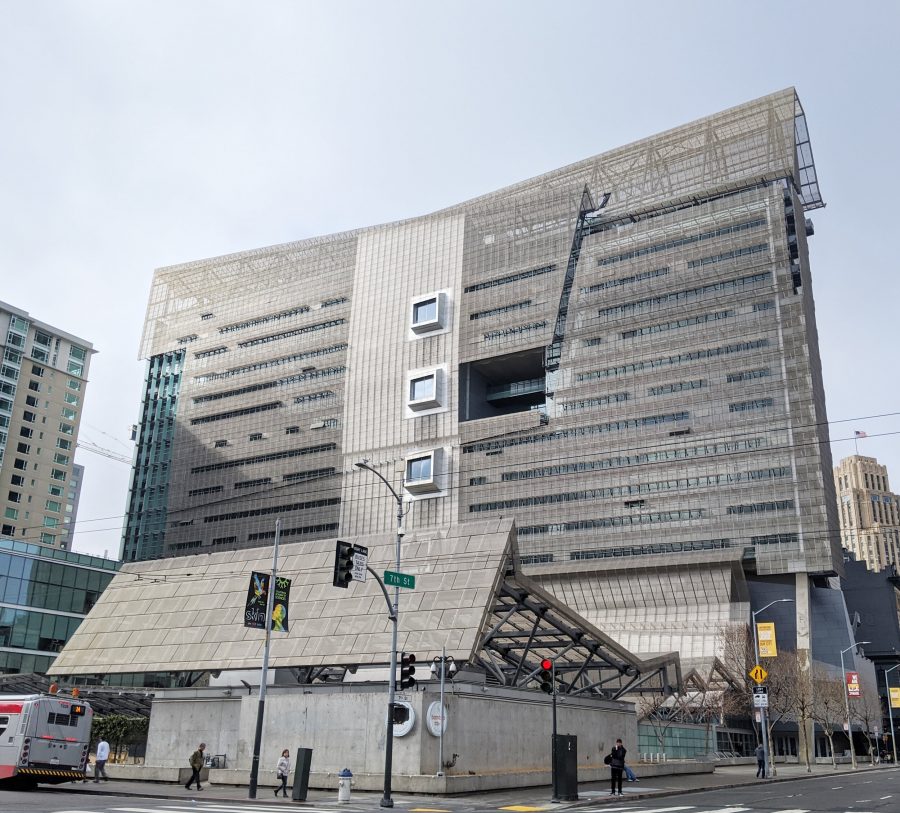
Morphosis Architects, the San Francisco Federal Building, 2020
While the executive order is an example of the facetious and knee-jerk ‘cancel culture’ that Trump otherwise often decries, it was built upon a litany of broad-brush attacks on modernism espoused by writers like Tom Wolfe, Roger Scruton, and Catesby Leigh, as well as by U.S. Commission of Fine Arts Chairman Justin Shubow, who is thought to have drafted the order for Trump. This tribe has long conflated architecture that does not evince adherence to classicism – and even, in the case of postmodernism, a lot of architecture that actually does! – as a betrayal of humanism and aesthetic traditions supposedly inherent to democracy. But in the hands of Trump, this ignorant and nostalgic conservatism formed a malignant authoritarian edict: a limit on the public imagination of civic buildings that mirrors his political ideology which seeks to limit citizenship, cultural diversity, social consciousness, and artistic expression.
Donald Trump did not, of course, initiate the use of architecture as propaganda in the United States, but his order was the first dictatorial pronouncement. From the eighteenth – and nineteenth-century reliance on Greek and Roman classicism to connote stability and refinement, through the twentieth-century embrace of streamline modern and Art Deco to connote the progressive bona fides of Roosevelt’s New Deal, to the Cold War-era deployment of modernism to demonstrate the efficiency and effectiveness of the welfare state and the nation’s technological superiority, the U.S. government has always deployed architecture in a symbolic, and often didactic, manner. Yet never was the nation subjected to an order with so limited a scope. Most of these earlier affinities were, rather, the result of softer exercises of power, and almost never by that of the president directly.
Mandating neoclassicism makes little sense. The propagandist’s view of classicism reduces the style to a simple program of details such as columns, pediments and figural work, fenestration patterns arranged into bays, and forms judged for pure symmetry. White nationalists seem to seek only the affect of classicism: a simplified set of visual traits without the actual historic complexity.
One of the authorities on classical architecture, John Summerson, wrote that ‘embedded in the history of classical architecture is a series of statements about the essentials of architecture and these are in agreement over a long time, to the extent that we say that the aim of classical architecture has always been to achieve a demonstrable harmony of parts.’1 This harmony is not simply located in aesthetic aspects of a style, however. As Summerson continues, the avant-garde work of modern movement pioneers Peter Behrens and Auguste Perret, with their attendance to order and symmetry, fit perfectly within the classical paradigm.
In the early United States, meanwhile, classicism represented an effort to challenge authority. The new nation saw itself as a grand experiment of republican democracy unparalleled since ancient Rome. As such, its architects saw fit to eschew the formulaic Vitruvian classical rules that more recently had been distilled in folios by Serlio, Palladio, and others. American architects instead harnessed an Enlightenment interest in nature and science, the primitivism of Marc-Antoine Laugier, the architecture parlante of Claude-Nicolas Ledoux and Étienne-Louis Boullée, and the results of recent actual archaeological encounters with classical Greek and Roman architecture. As architectural historian Dell Upton argues, American classicism sought to engage reason through these new sources, thought superior to rote imitation, so that the architecture of the new nation would break from precedent and establish a new tradition that embraced pluralism and the architect’s imagination.2
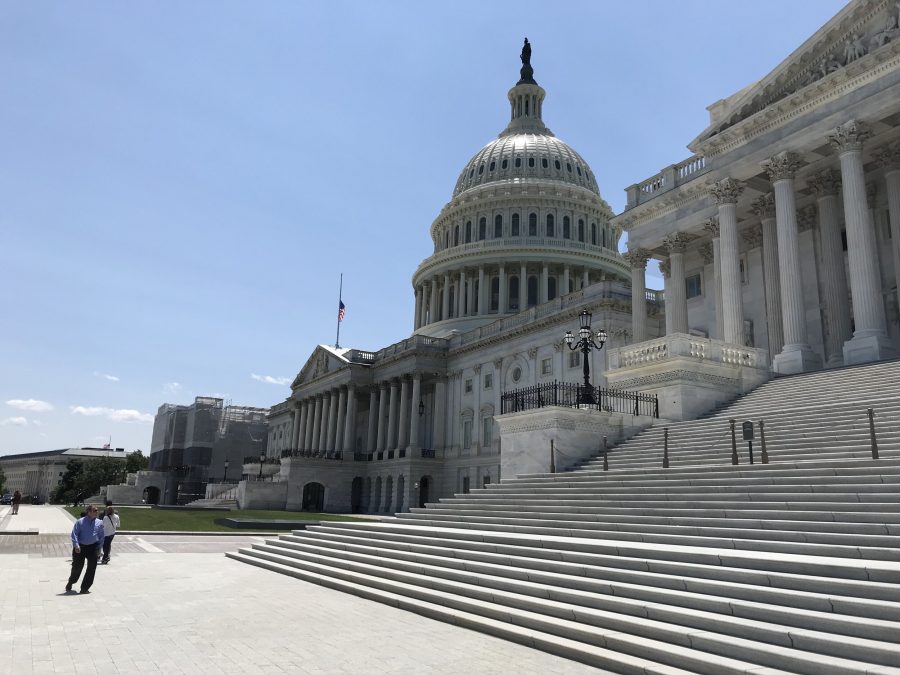
The U.S. Capitol’s main entrance on the eastern elevation, 2019
One need look no further than the United States Capitol – not surprisingly the target of white nationalist occupation during the January 6, 2021 insurrection – itself for evidence. This grand building, expanded and remodeled several times, is one of the nation’s most iconic examples of neoclassicism, and certainly seems, at first glance, to embody the Trumpian ideal. Yet its Greek-influenced form is far from pure. It betrays attributes of pan-classical antiquity, including Roman elements and columns orders. It also incorporates elements of European baroque movements and representations of U.S. cash crops corn (maize), cotton, and tobacco in column capitals. This awkward hybridity led Upton to describe the building as ‘rambling, ungainly.’3
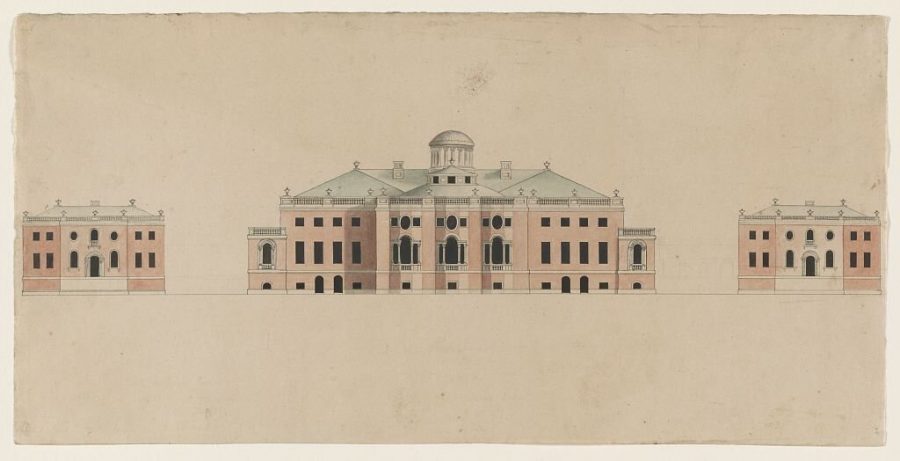
William Thornton, ‘Tortola’ scheme for the U.S. Capitol, winner of the 1792 design competition.
The building is also a work of elaborate hypocrisy. Architect William Thornton’s original competition-winning design in 1792 proposed something akin to a Georgian country house with attached lodges, but he soon refined this plan into a neoclassical palace in which the disparate functions of a bicameral Congress and offices were located in a seemingly united, symmetrical design beneath a dome inspired by the Roman Pantheon. Yet there is something amiss in building’s two distinct elevations, which Thornton designed as a formal entrance on the east and a more monumental tempietto facing the National Mall to the west—a gap that spoke to tensions in the early nation between the urban and the pastoral, or as architectural historian Peter Minosh writes, a stark visual ‘misalignment between the sites of production and those of civic representation.’4 For not only was the Capitol built with the labour of enslaved people, the pastoral aspects of its setting were made possible only by the removal of plantation agriculture to outside of the new District of Columbia’s borders.
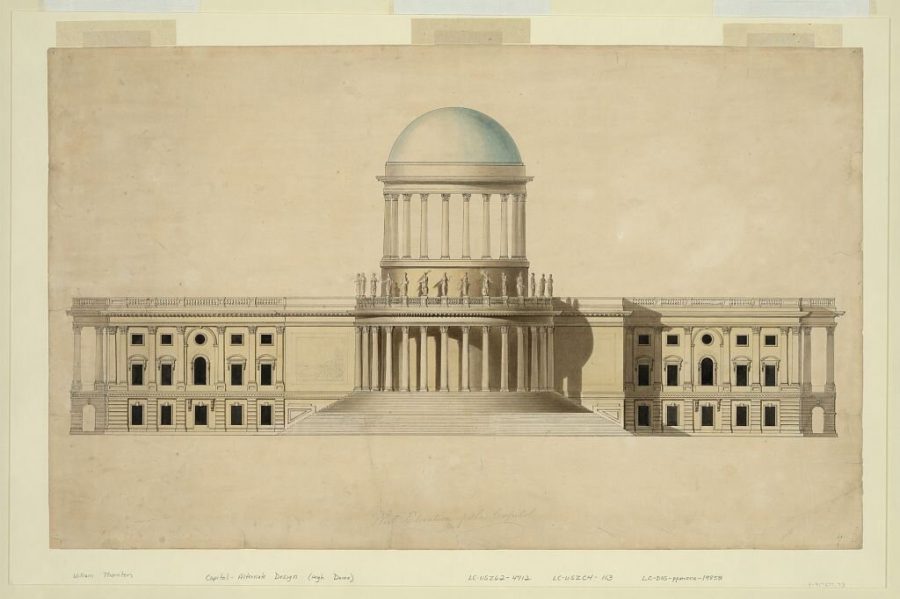
William Thornton, revised design for the eastern elevation of the Capitol, 1794
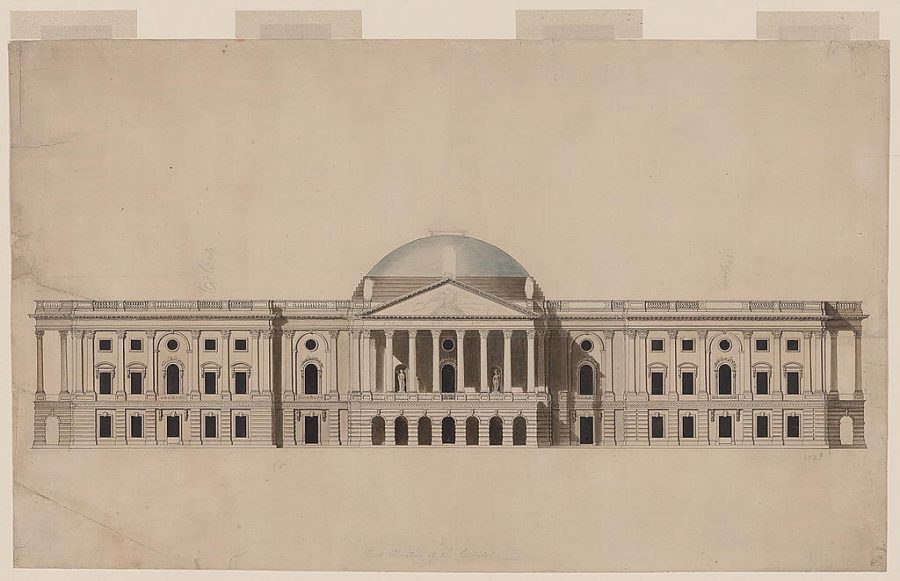
William Thornton, revised design for the western elevation of the Capitol, 1794, 1794
In recent years some historians have embraced narratives that include the dissonance of American classicism; to them, the contradictions of the Enlightenment project in the United States are that obvious. But conservative advocates have committed to an unabashed narrative that favors social and racial hierarchy. The idea that architects would strip references to old symbols of power and wealth rankles them, just as any hint of social progress or acknowledgement of the wider set of actors who shape the world is anathema. They will never, for instance, recognize the contributions of Black Americans to the design and construction of classicism. If Trump’s use of neoclassicism relies on an invented past, it is for these reasons that its danger lies in its desired future. Neoclassicism as propaganda masks an ideological opposition to actual democracy and human dignity.
Opposition to Promoting Beautiful Federal Civic Architecture has been swift. Unfortunately, it has been hampered by the architecture profession’s entanglements with wealth and power. A common refrain in the critique has been to defend the Guiding Principles that GSA propagated for new federal buildings in 1962—along with particular buildings, architects, and styles, like brutalism. Yet singling out particular architects’ contributions or elevating particular styles, whatever they may be, leads us to a different kind of Eurocentric, exclusionary architectural canon. No style, after all, is innocent (witness the fascist affinities of high modernists Le Corbusier and Philip Johnson). And that 1962 doctrine, written by the often controversial Daniel Patrick Moynihan, was hugely problematic. A vestige of the urban renewal era, when the federal government empowered architects and planners to replace Black neighborhoods and Black architecture with the designs of largely white professions, the directive stated that “design must flow from the architectural profession to the government, and not vice versa.” While AIA might applaud this idea (and it has), the fact is that it privileges not plurality but professional practitioners, their revenues, and their dominance of official valuation of architecture. Meanwhile, where were the architects and preservationists who now champion modernism when the federal government systematically demolished almost all surviving high-rise public housing in the 1990s and 2000s?
The way to fight Trumpian elitism masquerading as populism is not with more concentrated power, but actual democratic populism. A repudiation of Trump’s program shouldn’t defend plate glass, concrete, and abstraction—or professional privilege. In an ever more diverse nation, it should insist that we build with imagination, and with the contributions of a wider swath of our peoples than just well-educated, wealthy white men. No gatekeeper or style should define the civic symbolism of the United States. Because that determinism makes buildings propaganda—and thus incapable of carrying wider, plural values across time.
Notes
1. John Summerson, The Classical Language of Architecture, Cambridge: The MIT Press, 1966, page 63.
2. Dell Upton, Architecture in the United States, Oxford: Oxford University Press, 1998, page 72
3. Ibid., page 75
4. Peter Minosh, ‘American Architecture in the Black Atlantic: William Thornton’s Design for the United States Capitol’, Race and Modern Architecture: A Critical History from the Enlightenment to the Present ed. Irene Chang, Charles L. Davis II, and Mabel O. Wilson, Pittsburgh: University of Pittsburgh Press, 2020, page 54
Following the American elections of 2021, AA dedicated its June-July issue to the USA, available on our online shop.

